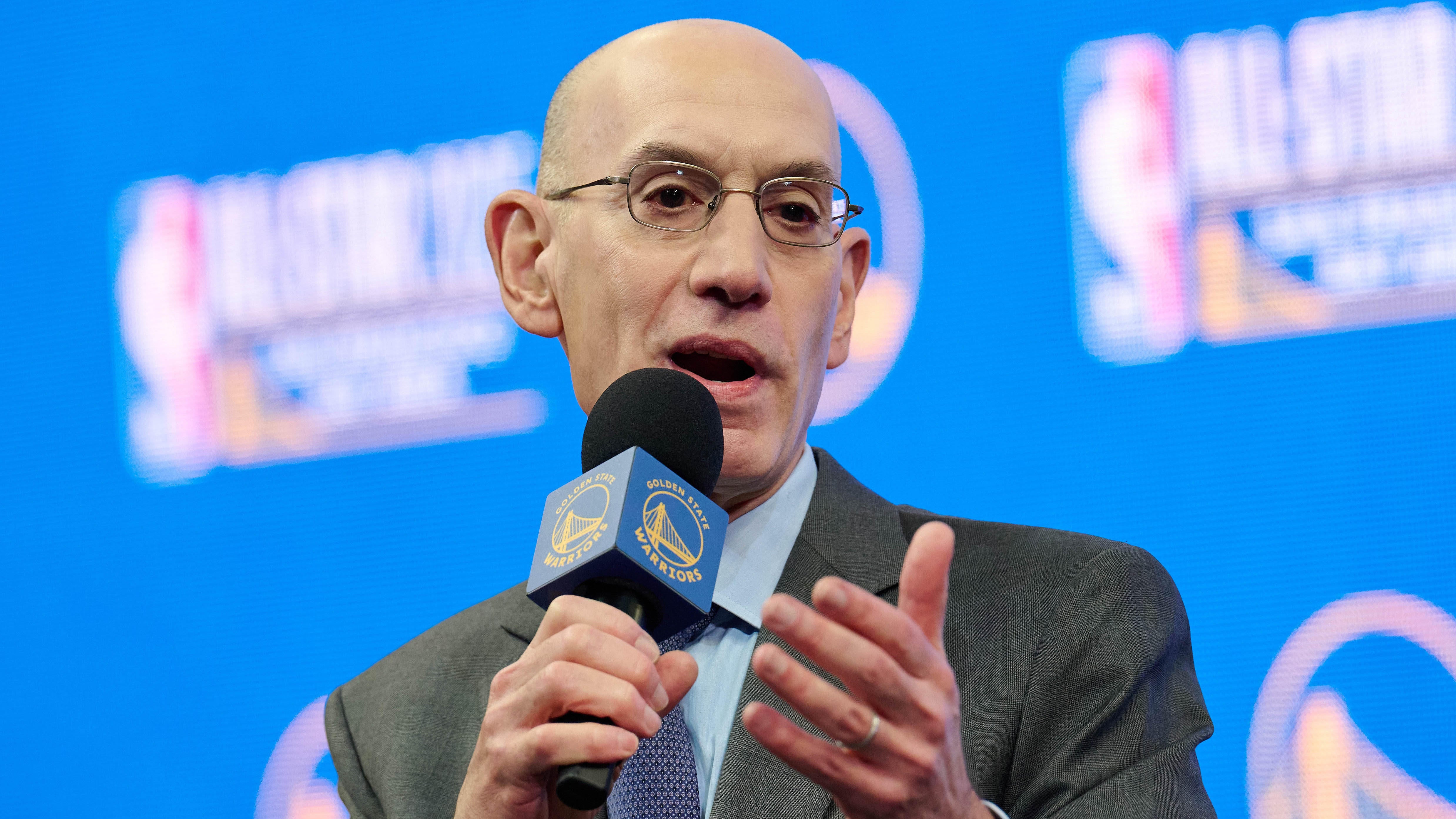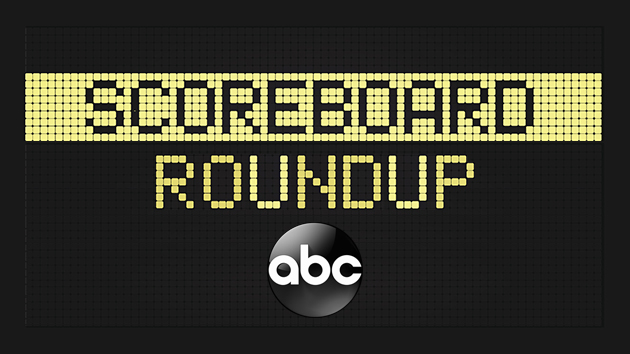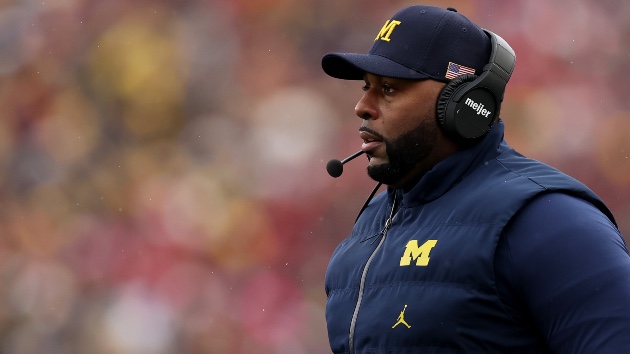What NBA’s new TV deal means for league’s salary cap, and why we won’t see a repeat of the 2016 spike
Written by CBS SPORTS ALL RIGHTS RESERVED on July 25, 2024


In a perfect world, the business decisions that the NBA makes off of the court should never affect the product it puts out on it. That famously was not the case when the NBA agreed to a new $24 billion television rights deal with Disney and Turner in October 2014. That deal, which roughly tripled the league’s previous national television revenue, set the stage for the most drastic cap spike in NBA history. Between the 2015-16 and 2016-17 seasons, the salary cap rose a staggering 32% in a single offseason. That spike from a $70 million cap to a $94.1 million cap wreaked havoc with the league’s competitive balance for the next several years.
It gave the Golden State Warriors the cap space to sign Kevin Durant without breaking up their core of Stephen Curry, Klay Thompson, Draymond Green and Andre Iguodala, but it also gave the rest of the league similar space to sign far less talented free agents to far worse deals. Remember when Timofey Mozgov got $64 million? How about Chandler Parsons’ max deal with the Grizzlies?
This might at least seem like a victory for the players, but it ultimately wasn’t. While 2016’s free agents got paid, the cap didn’t continue spiking from there, so free agents in 2017 and 2018 found themselves drastically underpaid because of the lack of available cap space. In 2016, 35 players signed deals worth $40 million or more in free agency. Two years later, despite the cap actually rising by another $7 million, that figure dropped to just 10, and the only player in the group to change teams was LeBron James. On virtually all fronts, the 2016 spike was a disaster for the NBA.
Well, the NBA just agreed to a new television rights deal. This time, it was with Disney, but instead of Turner, Comcast and Amazon have joined as media partners. Just as was the case last time, the NBA is expected to come close to tripling its annual national TV revenue. So, do fans need to worry about history repeating itself?
Fortunately, they do not. The 2016 spike was such a debacle for all parties involved that both the players and the owners worked to prevent it from happening again. The 2023 collective bargaining agreement — which, unlike the 2017 version, was agreed to before the media rights deal it would cover — included a very important clause that essentially amounts to cap smoothing. For the duration of this collective bargaining agreement, the salary cap can rise by no more than 10% in any given year. A version of this approach — with a minimum rise of 3% — was instituted during the COVID-19 pandemic and eventually codified permanently into the 2023 CBA.
Generally speaking, the cap is based on a projection of league revenue in the upcoming season. Players and owners have agreed to split basketball-related income practically evenly. In a given year, neither side can bring in more of it than 51% or less than 49%. The cap is a slightly lower figure — 44.74%, minus player benefits — divided by 30 because there are 30 teams in the league. The problem with following this formula so precisely was that it did not protect against massive, single-year jumps like the one we saw in 2016. Players will ultimately be owed more from the increase in revenue this TV deal generates than a 10% cap jump will account for, but the difference is that now, that extra money will be dispersed in a way that won’t have such drastic short-term roster-building consequences.
It will actually have the opposite effect: the revenue from this deal is expected to be so great that the widespread expectation is that the cap will now jump by 10% every year for the remainder of the current collective bargaining agreement. What would that look like? Here is a look at where the cap would fall if it does indeed jump by 10% every year starting during the 2025-26 season (when the new deal begins):
| Year | Projected Salary Cap |
|---|---|
2024-25 | $140.588 million |
2025-26 | $154.647 million |
2026-27 | $170.111 million |
2027-28 | $187.123 million |
2028-29 | $205.835 million |
2029-30 | $226.418 million |
The exact numbers may vary and will depend on where this summer’s cap falls as the starting point for these 10% raises, but broadly speaking, barring another black swan event like COVID-19, this means we can expect the cap by almost $90 million by the end of the decade. Obviously, this means that player salaries will jump with them. The highest tier of max salary, which is available to 10-year veterans or players with between seven and nine years of experience that reach the supermax criteria, starts at 35% of the cap. That means that a five-year max contract signed with a team that has Bird Rights, and therefore the ability to offer 8% raises annually, would be worth nearly $460 million.
| Year | Salary |
|---|---|
2029-30 | $79.246 million |
2030-31 | $85.586 million |
2031-32 | $91.926 million |
2032-33 | $98.266 million |
2033-34 | $104.606 million |
Total | $459.810 million |
Yes, we now live in a world in which players earning $1 million per game, even $100 million per season, are well within reach. There is, however, one notable way in which this new TV deal could actually lower the salary cap, at least on a relative basis: expansion. “We will turn to expansion once those new media deals are done,” Silver said in 2023. Well, now those media deals are done, so expansion is likely on the horizon.
Expansion works by essentially allowing an ownership group to buy a team that doesn’t yet exist from the league. The new owners write a hefty check to all present owners, and then that team not only comes into existence, but gets to share in all shared league revenue sources equally moving forward. This trickles down to the salary cap because there are suddenly more teams dividing the same revenue pie. The expectation is that the league will eventually expand from 30 teams to 32, meaning that instead of 44.74% of projected basketball-related income being divided into 30 parts to create the cap, it will be divided into 32. We don’t yet know when expansion is coming, so we can’t predict when or if this will affect the cap, but it seems as though it is more a matter of “when” than “if” at this point.
If all of this seems a bit overwhelming, remember that the current TV deal doesn’t expire until the end of the 2024-25 season. You have a year to adjust to the league’s new financial and broadcasting realities. So does your favorite team. But all of this new money is going to change the ways that NBA rosters are built. We can’t anticipate exactly how yet, but we at least have an idea of the numbers that we’re working with.
The post What NBA’s new TV deal means for league’s salary cap, and why we won’t see a repeat of the 2016 spike first appeared on OKC Sports Radio.






